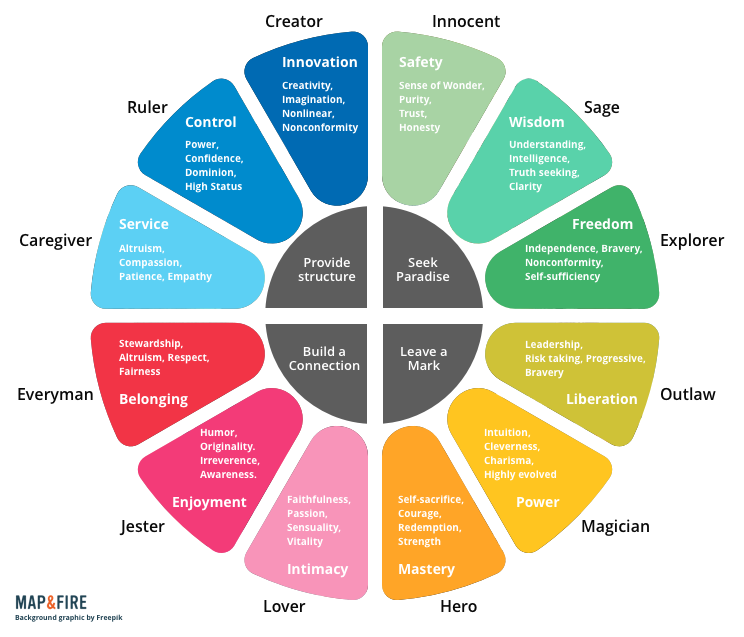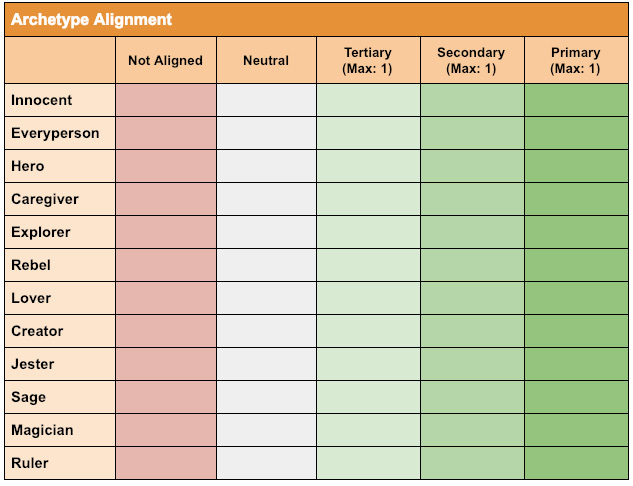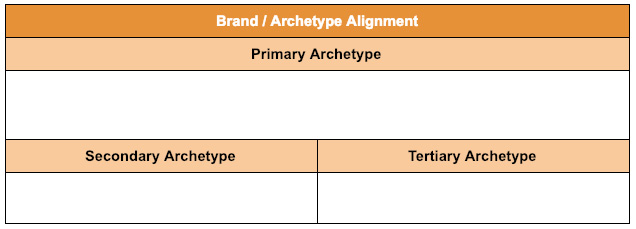
One of the hardest parts of creating content for a business is developing a consistent style.
Consistency in this case means two things:
- Ensuring the actual content is consistent from piece to piece, and channel to channel.
- Embodying a style and character that are consistent with the needs of your audience.
Both of these elements are important and both can benefit from the use of Brand Archetypes.
A Brand Archetype is a tool we can use to help define the qualities and characteristics of a brand. It gives us a way to describe the brand’s personality and how it’s unique.
The concept of archetypes is rooted in identifying patterns of thought and behavior that we see in the world. The origins of this go back to Plato and were formalized by Carl Jung. The concept was later popularized for business through books like The Hero and The Outlaw and Archetypes in Branding.
In our lives we see these archetypes on TV and in movies and read about them in books. Even when we’re not consciously aware of it, we identify with archetypes on an intuitive level.
If you recognize some of the movie characters above you already understand archetypes.
That intuitive connection is what makes archetypes useful with branding. It taps into concepts that we use to make sense of the world. And it provides a mental shortcut for how to think about and understand your business.
Again, this helps in two ways.
1. Make Every Piece of Content Consistent
The first benefit of Brand Archetypes is building consistency within your own process.
To build trust with your audience, it’s important that your content all feels like it came from the same place. This helps to set expectations around what their relationship will be with your business. It establishes your position in their life and helps customers to decide if they want to engage with you.
When it comes to execution though this consistency is easier said than done. Whether you’re an individual content creator or you have a team, you need guidelines to keep things on track.
Your tone of voice is one piece of the puzzle, but archetypes help flesh that out even more.
Regardless of the content channel, you need to know if it fits the brand. Does it look, sound, and feel right? Those are questions we often answer on a gut level. The trouble is everyone’s gut is a little different.
Archetypes provide a reference point to judge content against. This gets everyone on the same page and provides a healthy mechanism for providing feedback.
2. Create Content That Aligns With Your Customers
The other key benefit of using Brand Archetypes is that it gets you to think about the type of character your customers would relate to and trust.
When you think about potential archetypes, it’s important to remember that you’re selecting around the characteristics of your business not your customer.
Your business should aim to complement your customers, not mirror them.
For example, imagine you had a B2B service that helps startup founders organize their business. Your startup customers may be Explorers or Creators. But they aren’t seeking help from another Explorer. They’re seeking a Sage or a Caregiver to guide them and encourage good decisions.
It’s also important to note that these decisions aren’t about your personal preferences. Even if you’re funny in real life, it doesn’t mean that the Jester archetype will be effective with your audience. Though in general, I do think most brands can benefit from at least a little Jester in the mix.
That brings us to the Brand Archetype exercise.
Exercise: Pick Your Unique Blend of Archetypes
Like characters in a movie or a book, businesses can’t typically be defined by one singular archetype.
A better way to think about it is to select a primary archetype with some a blend of supporting archetypes.
Use the exercise below to select a primary, secondary, and tertiary archetype for your brand.
Here’s another version of the archetype wheel with some descriptions to guide your choices.

Select your 3 Brand Archetypes:

Then provide some clarifying thoughts on why each selection is relevant to your business:

With that information in place you now have a new way to evaluate the alignment of your content. It’s a simple mechanism to keep your content consistent over time and clarify connections with your customers.



